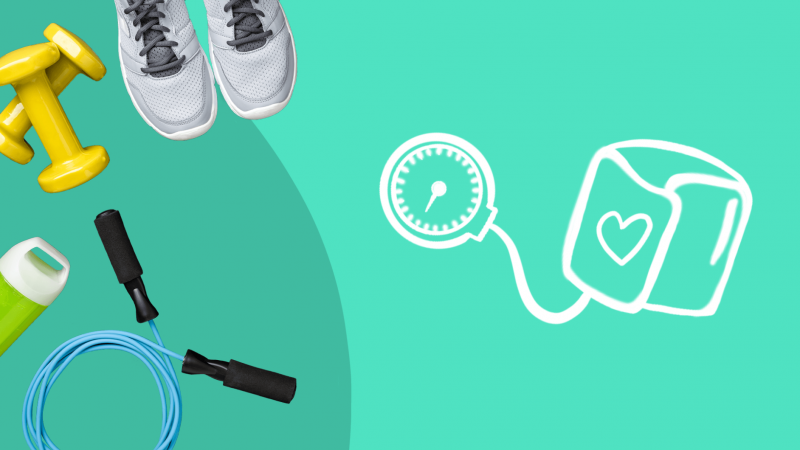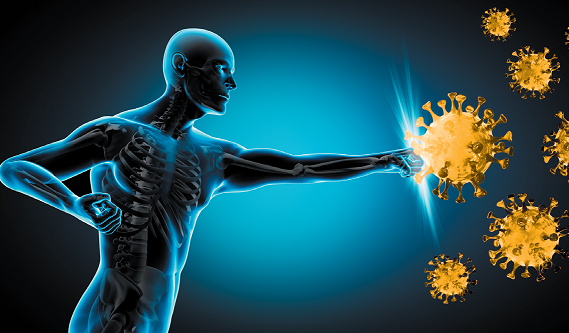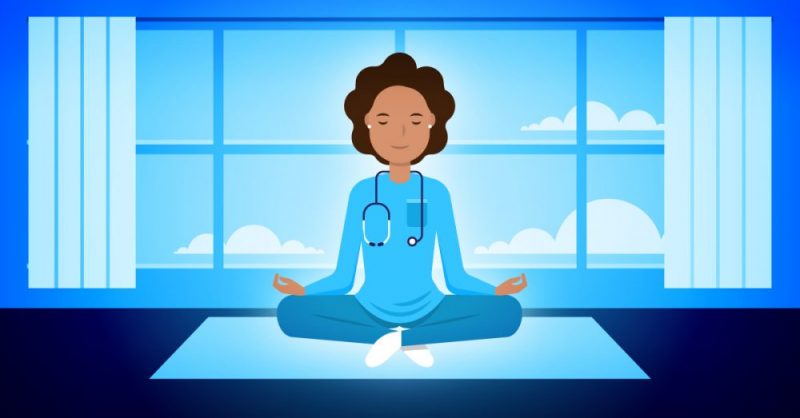Learn how to naturally regulate your blood pressure through exercise with these expert-backed tips. Say goodbye to hypertension and hello to a healthier you.
Hey there, folks! I’m here to talk about something that’s as common as rain but doesn’t get nearly as much attention: high blood pressure. It’s sneaky, often symptomless, but it’s a serious health concern that affects millions worldwide.
Do you find yourself constantly checking your blood pressure, worrying about the numbers on that little screen? You’re not alone. But the good news is, you don’t have to depend solely on medication to keep it in check. In this article, we’re going to dive into the world of exercise and how it can be your secret weapon in regulating your blood pressure naturally.
So, let’s get moving and explore the 5 natural ways to regulate your blood pressure through exercise!
The Lowdown on Blood Pressure
Before we jump into the exciting world of exercises to regulate blood pressure, let’s have a quick chat about what blood pressure is and why it matters.
What is Blood Pressure?
Blood pressure is the force of blood pushing against the walls of your arteries. It’s measured in millimeters of mercury (mm Hg) and is expressed as two numbers: systolic pressure over diastolic pressure. The systolic pressure represents the force when your heart beats, while the diastolic pressure represents the force when your heart rests between beats.
Why is It Important?
Maintaining healthy blood pressure is vital because high blood pressure, or hypertension, can increase your risk of serious health problems, such as heart disease, stroke, and kidney disease. But don’t worry, we’ve got you covered with natural solutions.
Why Exercise for Blood Pressure?

Now, you might be thinking, “Why exercise, of all things?” Well, exercise is one of the most effective and natural ways to regulate your blood pressure. Here’s how it works:
Exercise Strengthens Your Heart
Regular physical activity helps make your heart stronger. A stronger heart can pump blood with less effort, reducing the pressure on your arteries.
It Keeps Your Arteries Clear
Exercise helps keep your arteries and blood vessels flexible and clear of plaque buildup. This ensures that blood flows freely, preventing pressure spikes.
Weight Management
Maintaining a healthy weight is crucial for blood pressure regulation. Exercise can help you shed excess pounds or prevent weight gain, keeping your blood pressure in check.
Reduces Stress
Exercise releases those feel-good endorphins, reducing stress and promoting relaxation. Lower stress levels are associated with healthier blood pressure.
Now that we’ve established why exercise is crucial, let’s get into the nitty-gritty of the 5 natural ways to regulate your blood pressure through exercise.
1. Cardiovascular Workouts: Pump Up Your Heart Health
First on our list are cardiovascular workouts, also known as aerobic exercises. These activities get your heart rate up and your blood pumping. Here are some options:
Brisk Walking: This simple exercise is something anyone can do. Take a brisk walk for 30 minutes most days of the week. You’ll be amazed at the positive impact on your blood pressure.
Jogging: If you’re looking for something a bit more intense, jogging is a fantastic option. Start slow and gradually build up your stamina.
Cycling: Hop on a bike and go for a ride. It’s not only a great workout but also gentle on your joints.
Swimming: Dive into the pool and swim a few laps. It’s an excellent full-body workout that’s easy on the joints.
Jump Rope: It’s not just for kids! Jumping rope is a fun and effective way to get your heart rate up.
Dancing: Put on your favorite tunes and dance around. It’s a great way to stay active and have fun while doing it.
So, how does this help with blood pressure? Cardiovascular workouts, like these, strengthen your heart, improve blood circulation, and help you maintain a healthy weight. Plus, they’re great stress busters!
2. Strength Training: Power Up Your Muscles
Don’t underestimate the power of strength training when it comes to regulating blood pressure. Building muscle can make a significant difference in your overall health. Here’s how to get started:
Lift Weights: You don’t need to be a bodybuilder to enjoy the benefits of weightlifting. Start with lighter weights and gradually increase the resistance.
Resistance Bands: These are a versatile and portable way to add resistance to your exercises. They’re great for targeting specific muscle groups.
Bodyweight Exercises: Exercises like push-ups, squats, and planks use your own body weight for resistance. They’re effective and require no special equipment.
Strength training helps by improving your muscle-to-fat ratio, which in turn enhances your metabolism. As you gain muscle, you burn more calories even when you’re at rest, making it easier to maintain a healthy weight and control your blood pressure.
3. Yoga: Find Balance and Serenity
Now, let’s slow things down a bit and talk about yoga. Yoga isn’t just about stretching and breathing; it can also have a profound impact on your blood pressure. Here’s how:
Breathing Exercises: Yoga places a strong emphasis on controlled breathing. Deep, slow breaths can help reduce stress and calm your nervous system.
Stress Reduction: Yoga promotes relaxation and mindfulness. Lowering stress levels can lead to improved blood pressure control.
Improved Circulation: Many yoga poses enhance blood flow to different parts of the body, aiding in overall circulation.
Yoga is an excellent choice for those who may have physical limitations or find high-intensity workouts challenging. It’s a gentle way to improve flexibility, reduce stress, and maintain healthy blood pressure.
4. Tai Chi: The Gentle Martial Art
Tai Chi is often referred to as “meditation in motion.” This ancient Chinese practice combines slow, flowing movements with deep breathing. It’s like a mix of yoga and martial arts. Here’s how Tai Chi can help with blood pressure:
Stress Reduction: Just like yoga, Tai Chi reduces stress and anxiety, which can lead to better blood pressure control.
Improved Balance: The slow, controlled movements of Tai Chi can enhance your balance and coordination, reducing the risk of falls and injuries.
Low Impact: Tai Chi is gentle on the joints, making it suitable for people of all fitness levels.
Adding Tai Chi to your routine can help you manage stress and maintain healthy blood pressure levels without putting excessive strain on your body.
5. High-Intensity Interval Training (HIIT): Get Results in Less Time
If you’re short on time but still want to get the benefits of exercise, consider High-Intensity Interval Training (HIIT). This approach involves short bursts of intense activity followed by brief periods of rest. Here’s how HIIT can work for your blood pressure:
Efficiency: HIIT workouts can be completed in a fraction of the time of traditional workouts, making them ideal for busy schedules.
Cardiovascular Health: The high-int
ensity bursts in HIIT workouts provide cardiovascular benefits, just like traditional cardio exercises.
Weight Management: HIIT can help you burn calories and lose weight more effectively than steady-state cardio exercises.
HIIT is a time-efficient way to regulate blood pressure and achieve your fitness goals. However, it’s essential to start gradually and consult with your healthcare provider, especially if you have any underlying health conditions.
FAQs About Regulating Blood Pressure Through Exercise
- How often should I exercise to regulate my blood pressure?
- Aim for at least 150 minutes of moderate-intensity exercise per week or 75 minutes of vigorous-intensity exercise, along with muscle-strengthening activities on two or more days a week.
- Can I combine different types of exercises for better results?
- Absolutely! Combining cardiovascular workouts, strength training, and activities like yoga or Tai Chi can provide comprehensive benefits.
- Should I consult with my doctor before starting an exercise regimen?
- It’s a good idea, especially if you have pre-existing medical conditions or are new to exercise. Your doctor can provide personalized recommendations.
- What are some dietary changes I can make to complement my exercise routine?
- A balanced diet low in sodium and rich in fruits, vegetables, and whole grains can further support healthy blood pressure.
- How long will it take to see results in my blood pressure through exercise?
- It varies from person to person, but with consistent effort, you can start seeing positive changes in a matter of weeks.
Wrapping Up: Your Path to Healthy Blood Pressure
In conclusion, managing your blood pressure doesn’t have to rely solely on medication. Exercise is a powerful, natural tool that can help you regulate your blood pressure and improve your overall health.
Remember, consistency is key. Make exercise a part of your daily routine, and you’ll be well on your way to healthier blood pressure levels. Don’t forget to consult with your healthcare provider, especially if you have underlying health conditions.
So, what are you waiting for? Lace up those sneakers, grab a yoga mat, or find a Tai Chi class near you. Your journey to better blood pressure starts now!
Read more: The Healing Power of Exercise: Battling Depression and Mental Health Recovery
And there you have it, folks! With the power of exercise, you can take control of your blood pressure and your overall well-being. Say goodbye to hypertension and hello to a healthier, happier you!
- Mayo Clinic – Exercise: A drug-free approach to lowering high blood pressure
- Mayo Clinic offers comprehensive information on how exercise can help manage high blood pressure.
- American Heart Association – Physical Activity and Blood Pressure
- The American Heart Association provides insights into the relationship between physical activity and blood pressure.
- WebMD – Exercise and Blood Pressure
- WebMD discusses the benefits of exercise in maintaining healthy blood pressure.
- Harvard Health Publishing – Exercise and blood pressure
- Harvard Health Publishing delves into how exercise impacts blood pressure and overall cardiovascular health.
- National Institute on Aging – Exercise & Physical Activity: Your Everyday Guide from the National Institute on Aging
- A resource from the National Institute on Aging that provides guidelines for exercise and physical activity for older adults.





